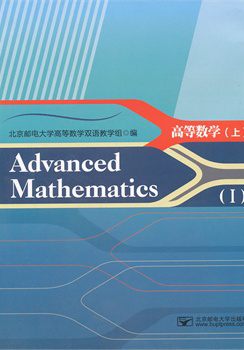微分方程群性质理论讲义(英文版)
作者: L.V.Ovsyannikov,N.H.Ibragimov,E.D.Avdonina
出版时间:2013年4月
出版社:高等教育出版社
- 高等教育出版社
- 9787040369441
- 1版
- 162154
- 0045155330-9
- 16开
- 2013年4月
- 210
- 156
- O175
- 数学类
- 研究生
Editor's preface
Preface
1 One-parameter continuous transformation groups admitted by differential equations
1.1 One-parameter continuous transformation group
1.1.1 Definition
1.1.2 Canonical parameter
1.1.3 Examples
1.1.4 Auxiliary functions of groups
1.2 Infinitesimal operator of the group
1.2.1 Definition and examples
1.2.2 Transformation of functions
1.2.3 Change of coordinates
1.3 Invariants and invariant manifolds
1.3.1 Invariants
1.3.2 Invariant manifolds
1.3.3 Invariance of regularly defined manifolds
1.4 Theory of prolongation
1.4.1 Prolongation of the space
1.4.2 Prolonged group
1.4.3 First prolongation of the group operator
1.4.4 Second prolongation of the group operator
1.4.5 Properties of prolongations of operators
1.5 Groups admitted by differentialequations
1.5.1 Determining equations
1.5.2 First-order ordinary differential equations
1.5.3 Second-orderordinarydifferentialequations
1.5.4 Heat equation
1.5.5 Gasdynamic equations
1.6 Lie algebra of operators
1.6.1 Commutator. Definition of a Lie algebra
1.6.2 Properties of commutator
1.6.3 Lie algebra of admitted operators
2 Lie algebras and local Lie groups
2.1 Lie algebra
2.1.1 Definition and examples
2.1.2 Subalgebra and ideal
2.1.3 Structure of finite-dimensionalLie algebras
2.2 Adjoint algebra
2.2.1 Inner derivation
2.2.2Adjoint algebra
2.2.3 Inner automorphisms of a Lie algebra.
2.3 Local Lie group
2.3.1 Coordinates in a group
2.3.2 Subgroups
2.3.3 Canonical coordinates of the first kind
2.3.4 First fundamental theorem of Lie
2.3.5 Second fundamental theorem of Lie
2.3.6 Properties ofcanonicalcoordinate systems of the first kind
2.3.7 Third fundamental theorem of Lie
2.3.8 Lie algebra of a local Lie group
2.4 Subgroup, normal subgroup and factor group
2.4.1 Lemma on commutator
2.4.2 Subgroup
2.4.2 Subgroup
2.4.3 Normal subgroup
2.4.4 Factor grop
2.5 Inner automorphisms of a group and of its Lie algebra
2.5.1 Inner automorphism.
2.5.2 Lie algebra of GA and adjoint algebra of Lr
2.6 Local Lie group of transformations
2.6.1 Introduction
2.6.2 Lie's first theorem.
2.6.3 Lie's second theorem
2.6.4 Canonical coordinates of the second kind
3 Group invariant solutions of differential equations
3.1 Invariants of the group GNr
3.1.1 Invariance criterion
3.1.2 Functional independence
3.1.3 Linearly unconnected operators
3.1.4 Integration of jacobian systems
3.1.5 Computation ofinvariance
3.2 Invariant manifolds
3.2.1 Invariant manifolds criterion
3.2.2 Induced group and its Lie algebra
3.2.3 Theorem on representation of nonsingular invariant manifolds
3.2.4 Differential invariant manifolds
3.3 Invariant solutions of differential equations
3.3.1 Definition of invariant solutions
3.3.2 The system (S/H)
3.3.3 Examples from one-dimensional gas dynamics
3.3.4 Self-similar solutions
3.4 Classification of invariant solutions
3.4.1 Invariant solutions for similar subalgebras
3.4.2 Classes of similar subalgebras
3.5 Partially invariant solutions
3.5.1 Partially invariant manifolds
3.5.2 Defect of invariance
3.5.3 Construction of partially invariant solutions
3.6 Reduction of partially invariant solutions
3.6.1 Statement of the reduction problem
3.6.2 Two auxiliary lemmas
3.6.3 Theorem on reduction
3.7 Some problems










